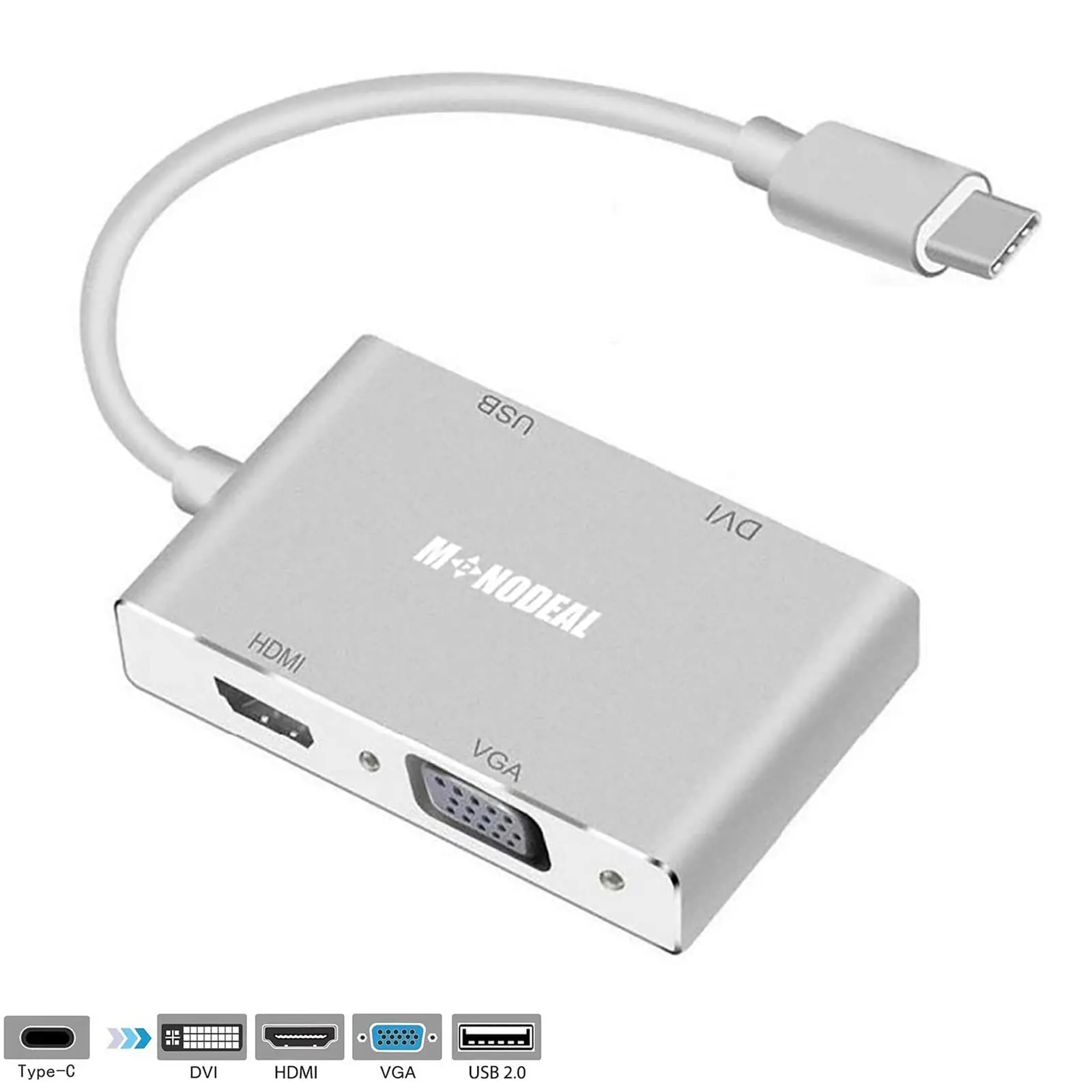How does a USB-C to DVI to VGA adapter work?


USB-C to DVI to VGA adapters have become increasingly popular in recent years due to their ability to connect modern devices with older display technologies. These adapters allow users to connect their USB-C enabled devices, such as laptops or smartphones, to DVI or VGA monitors or projectors. But how exactly do these adapters work? In this article, we will explore the technology behind USB-C to DVI to VGA adapters, their connectivity options, and the video conversion process involved.
USB-C: The Future of Connectivity
USB-C, also known as USB Type-C, is a versatile and powerful connectivity standard that has gained widespread adoption in recent years. It offers a range of benefits over its predecessors, including a reversible connector, faster data transfer speeds, and the ability to transmit both power and data simultaneously. USB-C ports can be found on a variety of devices, including laptops, tablets, smartphones, and even some monitors.
DVI and VGA: The Legacy of Video Connectivity
DVI (Digital Visual Interface) and VGA (Video Graphics Array) are older video connectivity standards that were widely used before the advent of HDMI and DisplayPort. DVI is capable of transmitting digital signals, while VGA is an analog standard. Many older monitors and projectors still rely on DVI or VGA connections, making them incompatible with modern devices that often only have USB-C ports.
The Role of the Adapter
USB-C to DVI to VGA adapters bridge the gap between modern USB-C devices and older DVI or VGA displays. These adapters typically consist of a USB-C connector on one end and either a DVI or VGA connector on the other end. They act as a converter, transforming the digital signal from the USB-C port into either a digital signal for DVI or an analog signal for VGA.
Video Conversion Process
When a USB-C to DVI to VGA adapter is connected between a USB-C device and a DVI or VGA display, it performs a video conversion process to ensure compatibility. Let’s take a closer look at how this process works:
1. USB-C to DVI Conversion:
– The USB-C port on the device sends a digital video signal.
– The adapter receives the digital signal and converts it into a DVI-compatible digital signal.
– The DVI-compatible digital signal is then transmitted to the DVI display, which can interpret and display the image.
2. USB-C to VGA Conversion:
– The USB-C port on the device sends a digital video signal.
– The adapter receives the digital signal and converts it into an analog VGA signal.
– The VGA signal is then transmitted to the VGA display, which can interpret and display the image.
Compatibility Considerations
While USB-C to DVI to VGA adapters provide a convenient solution for connecting modern devices to older displays, there are some compatibility considerations to keep in mind:
1. USB-C Compatibility:
– Ensure that your USB-C device supports video output through its USB-C port. Not all USB-C devices have this capability.
2. Adapter Compatibility:
– Check the specifications of the USB-C to DVI to VGA adapter to ensure it is compatible with your specific device and display. Some adapters may only support DVI or VGA, while others may support both.
3. Display Compatibility:
– Make sure your DVI or VGA display is compatible with the resolution and refresh rate of your USB-C device. Some older displays may have limitations in terms of supported resolutions and refresh rates.
Conclusion
USB-C to DVI to VGA adapters provide a convenient solution for connecting modern USB-C devices to older DVI or VGA displays. These adapters convert the digital signal from the USB-C port into either a digital signal for DVI or an analog signal for VGA. By understanding the technology behind these adapters and considering compatibility factors, users can easily connect their USB-C devices to legacy displays without sacrificing video quality or functionality.
Recent Posts
How do I create an engaging and informative online quiz or assessment?
Creating an engaging and informative online quiz or assessment can be a powerful tool for… Read More
What are the most effective methods for managing and reducing work-related stress in the hospitality industry?
Work-related stress is a common issue in the hospitality industry, where employees often face long… Read More
How can I improve my assertiveness and communication skills in a leadership position?
In a leadership position, assertiveness and effective communication skills are crucial for success. Being able… Read More
What are the key elements of a successful employee recognition and rewards program?
Employee recognition and rewards programs play a crucial role in motivating and engaging employees, as… Read More
How do I effectively manage and respond to customer feedback and reviews?
Customer feedback and online reviews play a crucial role in shaping a company's reputation and… Read More
What are the best strategies for effective time management as a stay-at-home parent?
Effective time management is crucial for stay-at-home parents who juggle multiple responsibilities on a daily… Read More